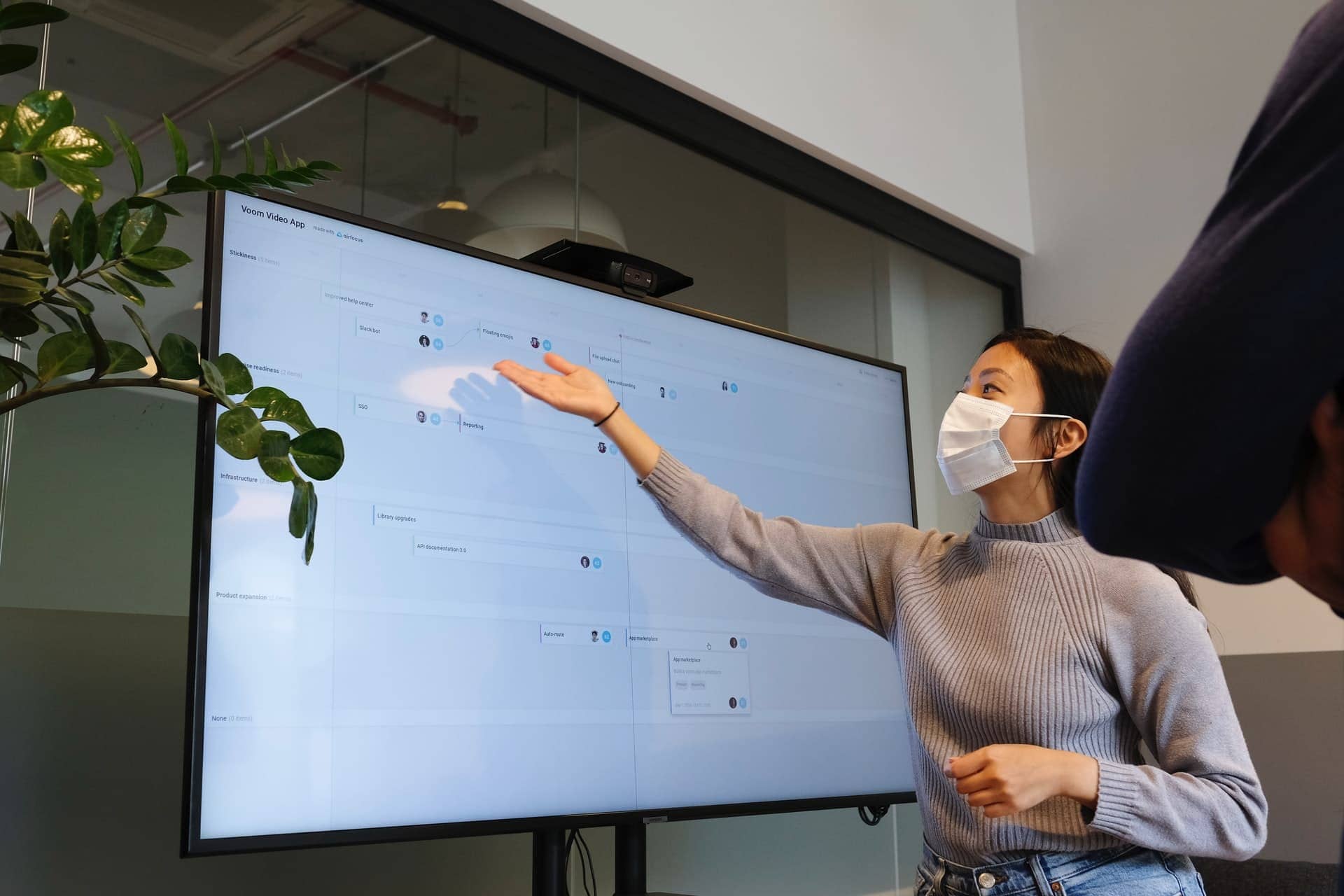Healthy Buildings
As we shift from response to recovery, there’s a renewed focus on workplace safety and wellbeing. This trend toward healthy buildings is certainly not new but has dramatically accelerated in 2020.
From a configuration standpoint, more office architects may opt for hybrid designs that incorporate open layouts, designated private offices, and adjunct offices. The idea behind this is to offer flexibility to adapt to most employee circumstances. The open office concept is a simple approach to distancing guidelines, while also encouraging collaboration between employees.
There is also special consideration to the type of furniture that should be used going forward. For increased fluidity, investing in functional and kinetic furniture (think sit-to-stand solutions) offers greater adaptability to rearrange layouts and accommodate employee work preferences as needed. Furniture with finishes that have antimicrobial/self-cleaning properties are also expected to dominate office wish lists.
Smart Offices
Advanced technological capabilities are instrumental in building resilience and business continuity. At the onset of the pandemic, many organizations were caught off guard by the stay-at-home orders and remote working conditions. In response, future offices will be outfitted with smart technology and adaptable processes that ensure uninterrupted connectivity. Employees will find themselves better connected with their job function, their workplace, and their IT infrastructure.
Additionally, technology’s role in creating a healthy office is an important design trend to watch. Touchless/voice-activated and motion-activated/sensor features, including lights and bathroom faucets, can significantly decrease physical human touch, thereby limiting germ transmission. Also consider facial recognition technology for door and elevator entry access.
The physical layout of future built environments may also leverage technologies in communal areas (automated and smart appliances in breakrooms, for example). Monitoring systems can help track occupancy in these areas for added safety. These technology adaptations give offices extra protection against illness outbreaks and subsequent closures.
Programs like Maptician take office planning and safety to the next level by offering a virtual way to reconfigure office and community spaces with a focus on filtration, access, cleaning, and social distancing. Interactive tools allow companies to complete a social distancing analysis, create flex schedules and contact trace if needed.
Sustainable Real Estate
Sustainable real estate continues to create a buzz and is expected to gain even more traction given that it directly supports the renewed focus on safety and flexibility post-COVID-19.
Top of the list is the air we breathe. While the recommended six feet of distance is said to limit the spread of pathogens, an inadequate and antiquated HVAC system is thought to actually spread contaminants more. HVACs require a lot of energy and thus hold substantial cost-savings potential. One of the most important parts of the HVAC system, for both safety and efficiency, is installing and maintaining MERV rated filters. Toss in tax breaks and green credit incentives and investing in energy-efficient ventilation systems with enhanced filtration and self-cleaning features not only maximizes airflow and indoor air quality, but could add to the building’s bottom line.
Another example to look for is temperature. When it comes to inter-office thermal control, the battle over the shared thermostat has been plaguing offices for decades. Automated thermostats that can be set to individual preferences will allow for greater control and reduce usage redundancy.
The KBS Vision
KBS feels that mixed-use environments can be the most risk-averse choice—and most resilient—because different asset types are combined into one site, allowing for flexibility against disruption. The current crisis has only magnified the demand for these all-inclusive built environments. KBS has a long history as a leader in future living and working, and continuously integrates smart technologies and concepts with sustainable systems at its properties to stay ahead of tenant demand during and after the pandemic. KBS remains committed to innovation, sustainability, and building resiliency.
The COVID-19 crisis has had a profound impact on the business landscape, which is forever changed. Companies with bustling offices were catapulted into a remote workforce almost overnight. Some were prepared and equipped for this type of disruption, while others were not. Regardless, one thing this crisis has taught us is that change is unpredictable and always a possibility, making the need for adaptability essential for both tenants and property owners. This crisis has also taught us that in order to withstand change, offices need to be flexible and adaptable.
Learn more about how KBS is helping tenants return to office, click here.



